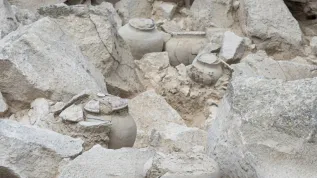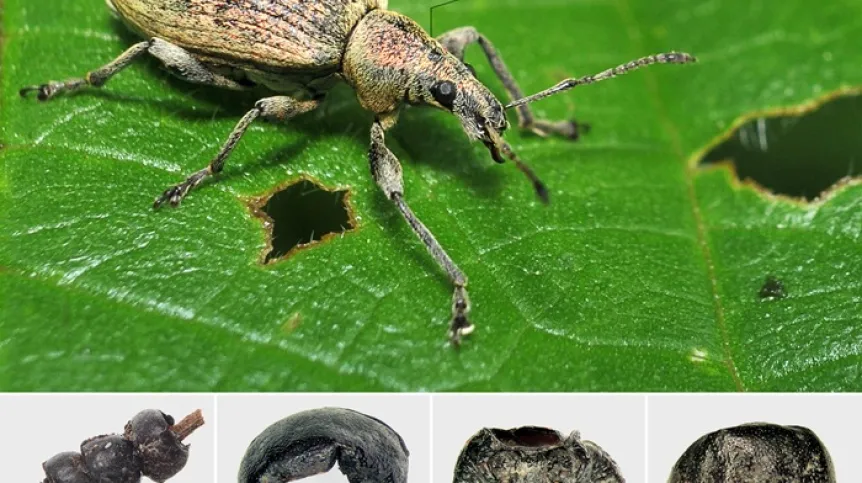
Archaeologists in Poland have discovered jewellery made from beetle exoskeletons in a 2,500-year-old child’s urn, providing the first clear evidence that prehistoric societies used insects for decoration.
The find was made during a re-examination of urns from a Lusatian culture cemetery in Domasław, Lower Silesian Voivodeship, dating to the Hallstatt period (ca. 850–400 BCE). The cemetery contained more than 800 graves, most with cremated human remains accompanied by vessels, swords, bronze ornaments, and toiletries.
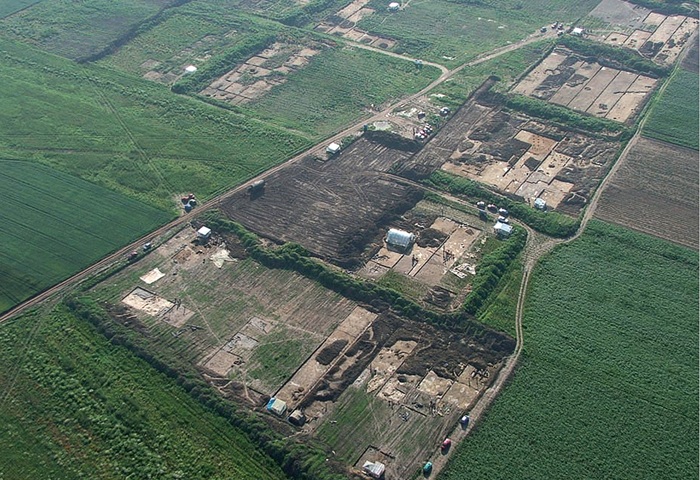
The child’s urn held the remains of a 9–10-year-old, cremated animal bones, a harp-shaped fibula, fragments of birch bark, and 12 complete and five fragmentary carapaces of the beetle Phyllobius viridicollis. Only the beetles’ pronotums were preserved, suggesting the head, abdomen, and legs were intentionally removed. Some pronotums were strung on a blade of grass and arranged in overlapping rows.
“Organic material identified in Urnfield Culture cemeteries usually only includes cremated bones and fragments of charcoal, rarely fabric fragments. Until now, there has been no clear evidence of insects being used as decorative elements by prehistoric communities,” said Agata Hałuszko, PhD, from Maria Curie-Skłodowska University.
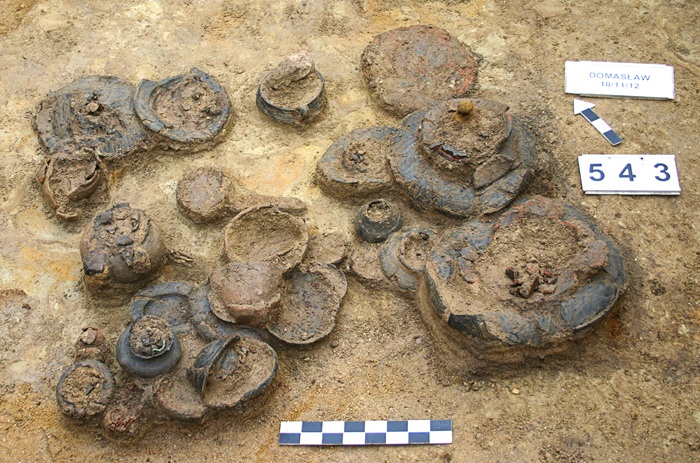
The beetles’ chitinous surfaces retained their sheen, likely due to chemical impregnation from the fibula’s corrosion. Pollen from dandelions was also found on a birch bark fragment, though Hałuszko said it is unclear whether it was intentionally placed or carried by the wind. Based on the beetles’ life cycle, the burial likely occurred in late spring or early summer.
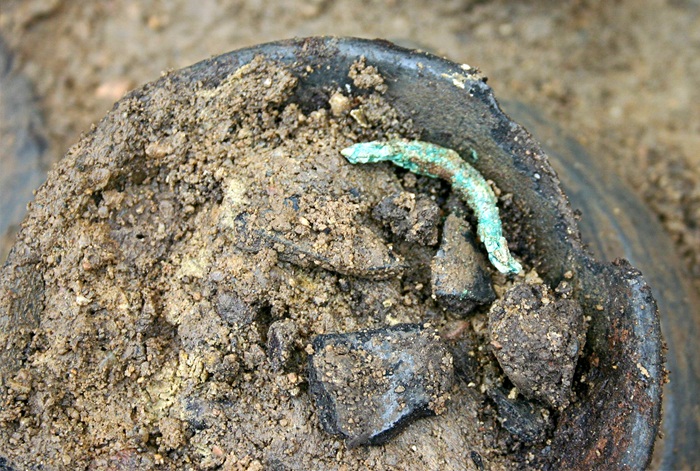
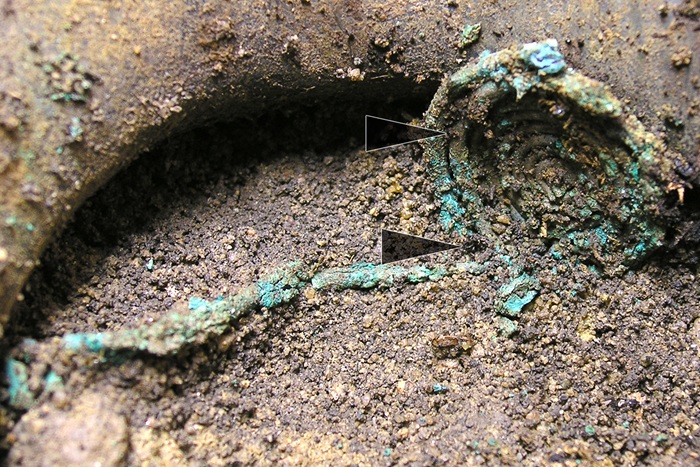
“Insects discovered in funerary contexts have most often been associated with magical practices and interpreted as symbols of the transience of life and death. The ones from Domasław were likely placed in the urn as decoration, but their function is difficult to clearly interpret,” Hałuszko said.
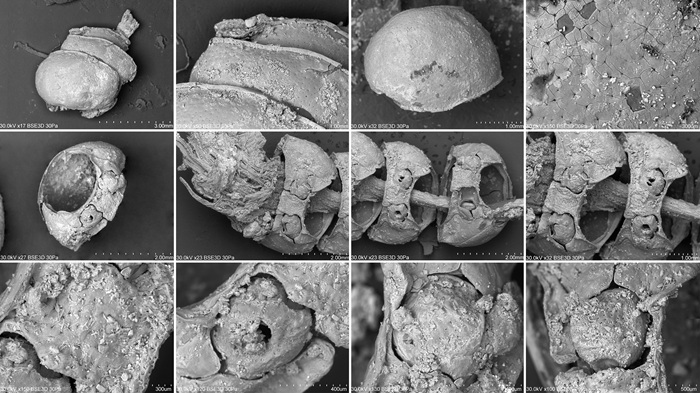
She added, “Due to the fragility of their chitinous shells, ornaments made from insect remains decay quickly. They are extremely rare in archaeological material, which makes the pronotums from Domasław a unique find.”
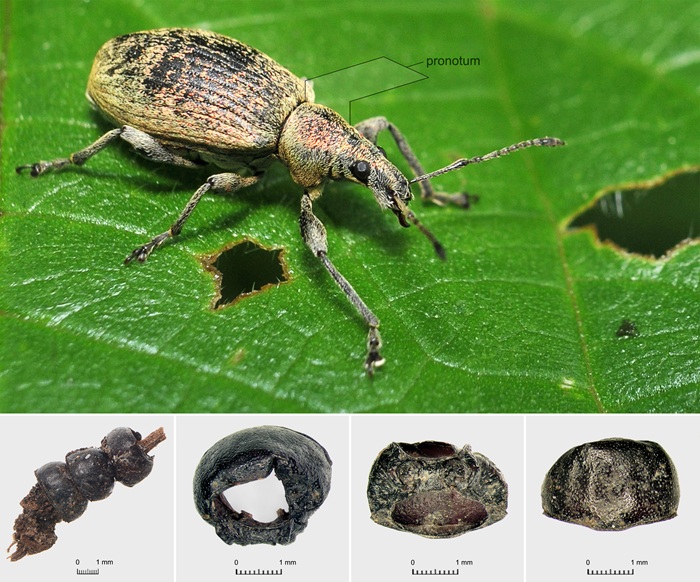
The research was published in the journal Antiquity and involved scientists from Maria Curie-Skłodowska University, the University of Wrocław, and the Institute of Archaeology and Ethnology of the Polish Academy of Sciences.
Ewelina Krajczyńska-Wujec (PAP)
ekr/ bar/ lm/
tr. RL


